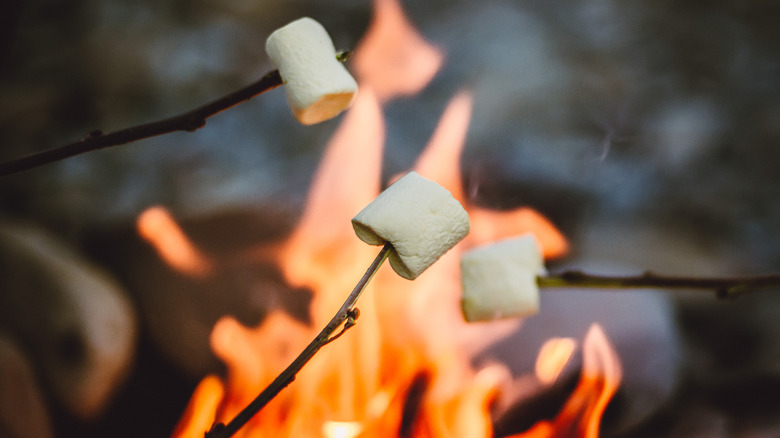The Truth About What's Really In Marshmallows
Whether you're partial to s'mores, gooey ice cream sundaes, Rice Krispies treats, or another kind of decadent sweet, chances are it is the permeating taste and texture of the marshmallow that sticks in your memory — as much as it did to your fingers.
Although we associate marshmallows with sugary desserts and cereals, the marshmallow as we know it today has a surprising early history. According to The History Channel, the name for the marshmallow is derived from the marsh mallow plant, which grows in marshy areas. Before the marshmallow evolved into the soft, squishy pillows that you squeeze between graham crackers or scatter on top of your hot chocolate, the marsh mallow plant was used in medicine.
Ancient Greeks, Romans, and Arabs used portions of the plant to treat inflammations, coughs, and as a healing agent for wounds. The marshmallow eventually evolved from medical treatment to mouthwatering treat in France during the 19th century (via The History Channel). The gooey root juice of the marsh mallow plant is what originally provided the texture for marshmallows, but it was a challenge to extract. As a result, the root juice was ultimately replaced by gelatin. Despite this essential change, the name "marshmallow" managed to stick around.
What other ingredients make up a marshmallow?
Aside from gelatin, which provides structure, the ingredients in marshmallows include sugar, corn syrup, and water, according to Food Network. Sometimes, they also include other ingredients that affect the taste and color. If you are a vegetarian or vegan, you can't partake in traditionally manufactured marshmallows due to the fact that gelatin comes from animal protein. However, there are marshmallows made with plants, such as seaweed. They taste the same but may be less fluffy.
As you might imagine, marshmallows have little to no nutritional value. However, like most other sweets, treating yourself to marshmallows every once in a while is likely not going to cause any health issues. That said, SFGate reports that if you eat burned marshmallows too often, it could be unhealthy. This is because food becomes potentially more toxic when it is intentionally burned as part of the cooking process. If you choose to eat marshmallows, eating them raw or lightly toasted, rather than charred, is the safest way to enjoy them.


